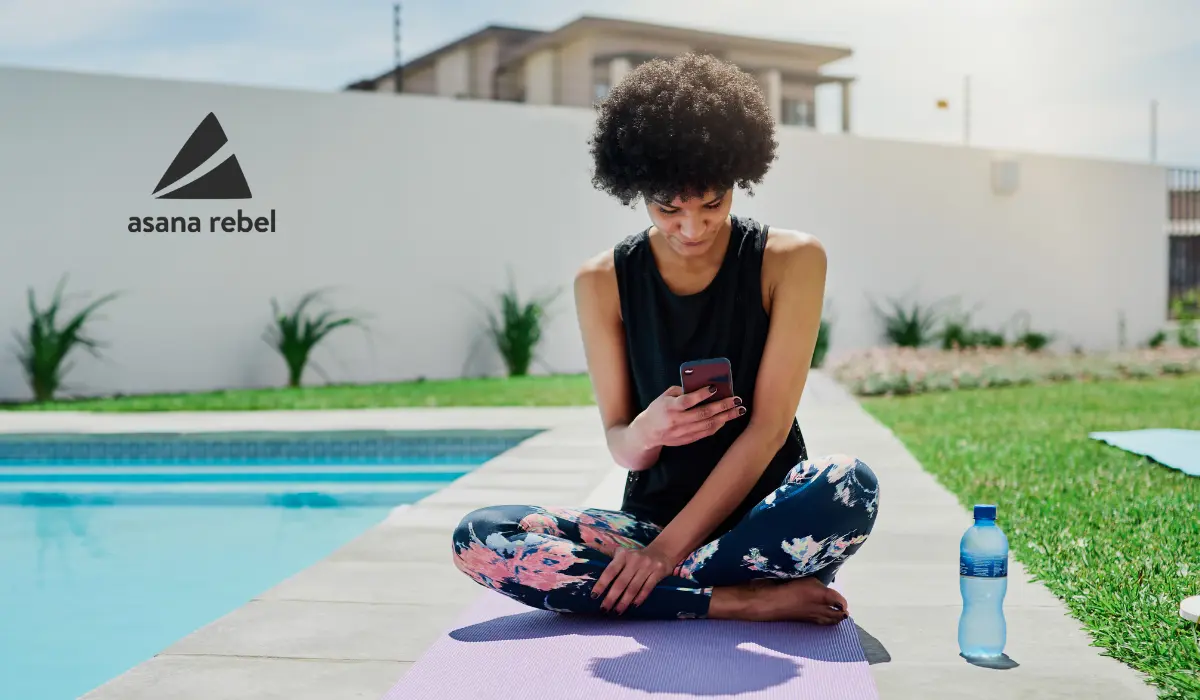Yoga is a way of self-help by working with one’s body. Specific positions, asanas, are used to train and harmonize the body functions, making it stronger and ensuring well-being. Yoga’s efficiency is grounded not only in ancient magic practices but also in modern scientific research so that you can be sure about it.
As you will see, Asana Rebel is an example of a successful, well-planned app. To understand how to create a yoga app like Asana Rebel, you can check the guide. It will show you the development process and help compute necessary costs. Before that, however, let’s review how your love of yoga, a healthy lifestyle, and mobile apps can become highly profitable.
Is It Worth It?
Right questions first. Let’s see the market numbers.
- The global yoga market reached $105.9 billion in 2022 and grows by more than 9% annually.
- The global fitness app market showed $1.3 billion in 2022, and its growth rates are even larger: 17.6%. You can see the U.S. part of the market below to estimate how rapidly it grows.
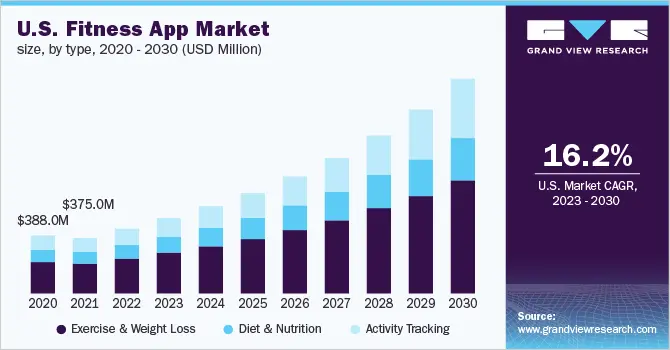
As you see, the potential is large. Yoga is popular today, and it becomes even more popular as more and more people in developed countries realize its potential to heal the body and fight stress.
So, let’s continue.
5 Steps to Create a Yoga App Like Asana Rebel:
1. Essential Features of a Yoga App
To be useful for practitioners, there are several must-have features. Asana Rebel is a good example of a successful yoga app, and we’ll use its features as a basis for you to understand what you need to include during the development.
It was reviewed by professional healthcare specialists who concluded that the practices Asana Rebel provides are actually useful and efficient. You can see examples of its interface below.
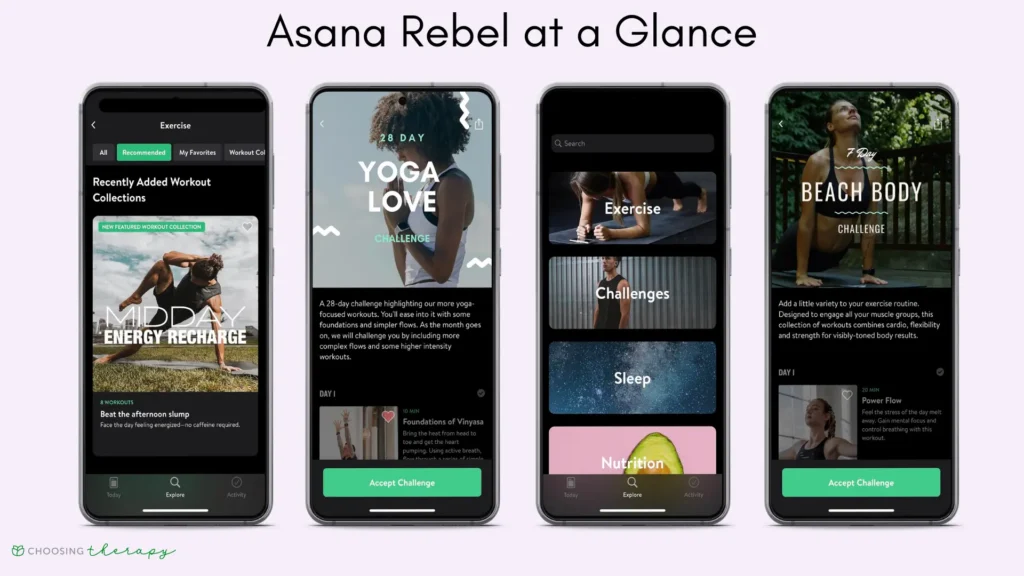
So, essential features of a yoga app like Asana Rebel include:
- User profile, which is the essential part, from which your customer will reach all other features and track their progress.
- A wide variety of materials, in video and photo form, will clearly show your customers how to exercise and enable them to explore various yoga positions.
- The search and filter interface would ensure that the customer chooses all programs and materials they need.
- Recommendations, showing suggestions of which materials to choose and why.
- Yoga courses with teachers’ credentials, where your customers will be able to register for various authors’ yoga courses.
- Mindfulness tools, which are deeply interconnected with yoga, such as different meditations
2. Optional Features of a Yoga App Like Asana Rebel
We know that you’re creative, and we propose several possible options for a yoga app to enhance your creativity even more. Some of them are present in Asana Rebel, while others are core features of other apps.
- Anatomy illustrations, which your customer will see when doing their exercises. They help understand the exercise effect and are especially attractive to curious customers.
- Other scientific evidence of how yoga work: for example, in the form of short articles.
- Nutrition features, which will describe various diets and help your customers choose the right one for them and stick to it.
- Meditation features can be greatly expanded with various music and videos.
- Additional resources where your customers will read more about yoga.
- Gamification options for scheduling and exercising: they include various badges, a leaderboard, colorful icons, and a high level of interactivity.
- Integrations with social media for progress sharing and other functions.
- Monitoring the body’s parameters via the usage of smartphone sensors and wearable devices to gather more data and make the process even more customizable.
- AI tools for data analysis and suggestions are the major current trend: a fitness app Zenia, for example, uses computer vision to analyze and direct its customers’ training, as you can see in the photo below.
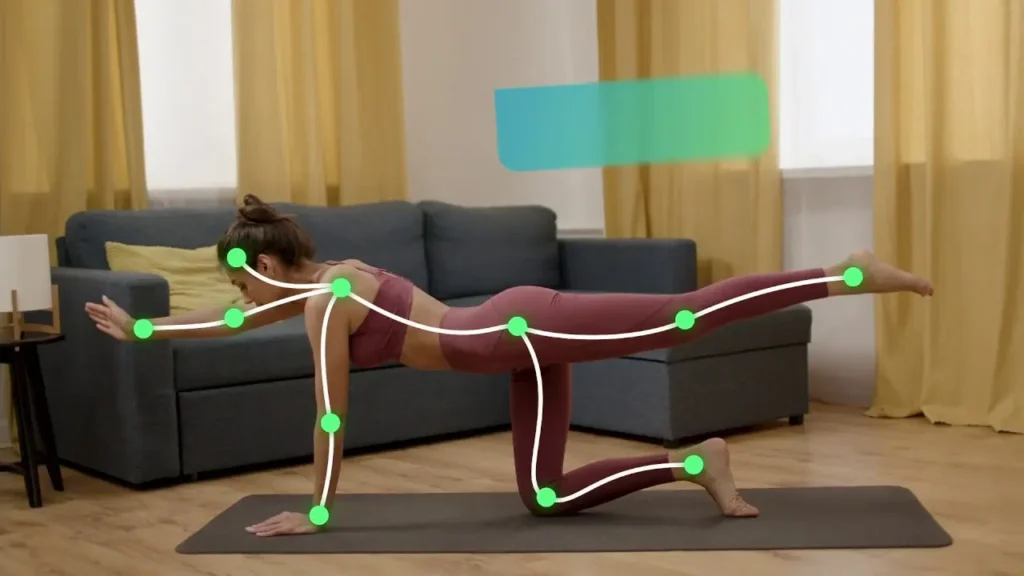
So, we presented many possible app functions, and now let’s see how to implement all this stuff!
3. Development Process of a Yoga App Like Asana Rebel
The yoga app development process differs little from other apps’ creation.
- Define your ideas and goals. What will be the core feature of your app? Easiness of usage, gamification, or cutting-edge AI technologies for yoga teaching? It’s best to start by clearly defining it.
- Conduct market research. It should be done simultaneously with the first point, as your idea should be compatible with the market realities to become successful.
- Make the app’s UI, based on its functionality for the customer.
- Develop the back-end code, which will implement all planned features; we recommend starting from the most essential for your app to test them first.
- Release the MVP (minimum viable product), which is an app version with minimum functionality. It will save you money before the development and release of a full-scale application.
- Analyze the response and develop the rest of the features.
- Release the full app and provide post-release support. You’ll obtain tons of feedback and comments and should be ready to communicate with your customers regularly.
4. Cost and Time for a Yoga App Like Asana Rebel
What do you need to schedule for the development? First, estimate how many hours are needed for the development of all your apps’ planned features. According to the mentioned guide, yoga app development will cost you approximately $50,000.
In another one, the initial MVP development is estimated as little as $15,000 – $30,000, and the end product is around $50,000 as well. If you want to include a large amount of advanced back-end features, it can rise up to $200,000.
Below, you can see a map of the approximate programmer’s work cost per hour to help you estimate the total cost.
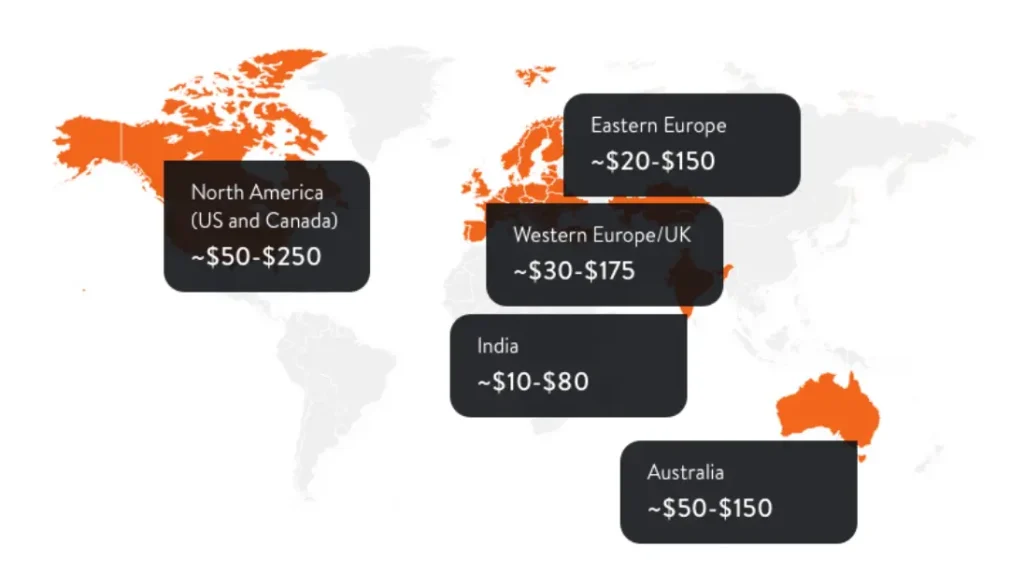
As you see, yoga apps are very different in functionality and development cost, but orient at $50,000 for the end product. Thus, it’s important to focus on the goal-setting and market research stages to clearly evaluate what will be necessary.
5. Monetizing Your Yoga App
Which paid functions can you include, being sure that your customers will pay for them?
Asana Rebel, for example, provides its subscription for $15.99/month (or $82.99 annually) and has no free trial. It has free features, such as fundamental workout videos and meditations, but it is only a bit fraction of the app’s functionality. Several options are available too, however, and some of them can be combined.
- Paid subscriptions, such as in Asana Rebel, will open full access to all apps’ materials and functionality.
- Premium options that your customer will purchase when they need them. To decide which these options can be, remember a list of additional features, such as various materials, body parameters monitoring, and AI-driven suggestions.
- E-commerce features, such as selling various yoga outfits and other related stuff.
- Contracts with yoga studios, to which you’ll bring your customers via the app, and they will share some part of the revenue with you.
Conclusion
As you see, yoga apps are easy to develop and can be highly profitable, especially if you love yoga and know much about it. They are very different in functionality and development cost, and there are a bunch of features you can include as distinctive ones for your app.
Therefore, to build a successful one, you need to choose features carefully, estimate how many hours are necessary to implement them in code, and how much it will cost you. Remember also that there is a variety of monetization strategies, including e-commerce features and contracts with yoga studios, and be sure to unleash all their potential!

